One of my favorite design tricks is to sneak a bunch of bulbs into a bed (I like to do it with a full season’s selection of alliums, but you can do it with other bulbs, too). It’s surprisingly easy, even in established plantings. When you’re dividing perennials, pop bulbs into the freshly dug spots. They’re happy to grow around and even through other plants. If you’re not dividing, just tuck bulbs into the gaps between perennials.
Fall is the perfect time for this. As plants naturally die back, you can see all the nooks and crannies where bulbs will fit. Plus, any digging and disruption will hardly be noticed during this seasonal wind-down.
In my front garden, I look forward to late spring and early summer when alliums take center stage. It’s my favorite time of year for this space. I started with Allium hollandicum ‘Purple Sensation,’ and when they bloom, my garden looks like this:
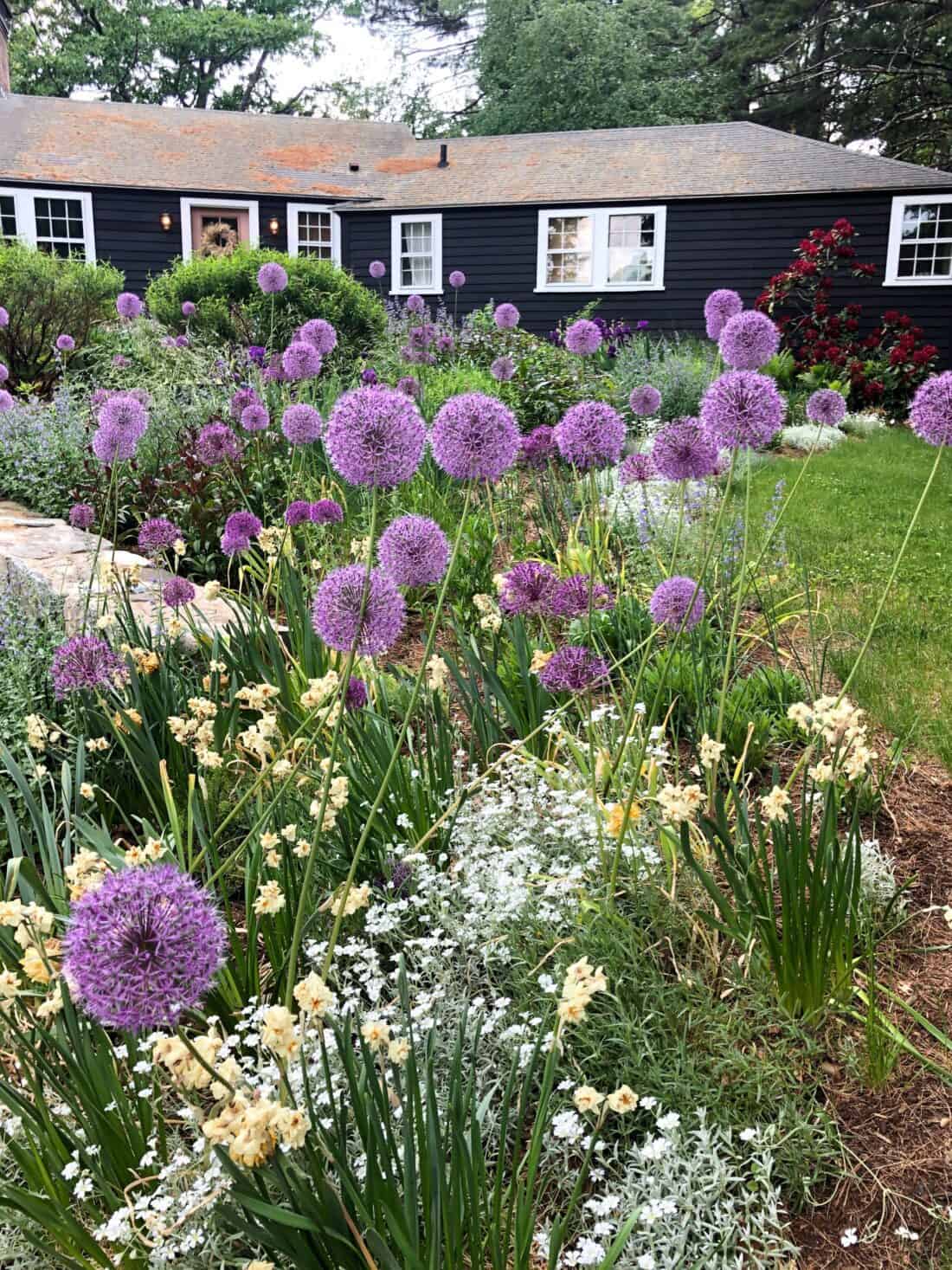
Understanding Alliums
Alliums are distinctive plants you’ve probably noticed—even if you didn’t know their name. They’re the ones with big, globe-like flowers perched on tall, slender stems. Often described as “purple balls on sticks,” these striking blooms are members of the onion family (Amaryllidaceae), sharing lineage with familiar plants like onions, garlic, and chives. If you’ve grown any of those, you’ll recognize the family resemblance.
While all alliums produce round, generally purple flowers, the ornamental varieties you plant in the fall are showier. They tend to be bigger, taller, and more colorful—ranging from classic purples to whites, pinks, yellows, and even deep reddish tones.
These bulbs are versatile and low-maintenance, making them perfect for mixed borders, containers, and cutting gardens. They’re also problem-solvers in garden design—ideal for creating a dramatic focal point or adding a “wow” moment where an area needs a little extra pizzazz.
Alliums aren’t just beautiful—they’re also practical. Their flowers attract pollinators like bees and butterflies, making them a great choice for supporting your local ecosystem. Plus, they’re naturally resistant to deer and rodents, so you don’t have to worry about your garden turning into a snack bar.
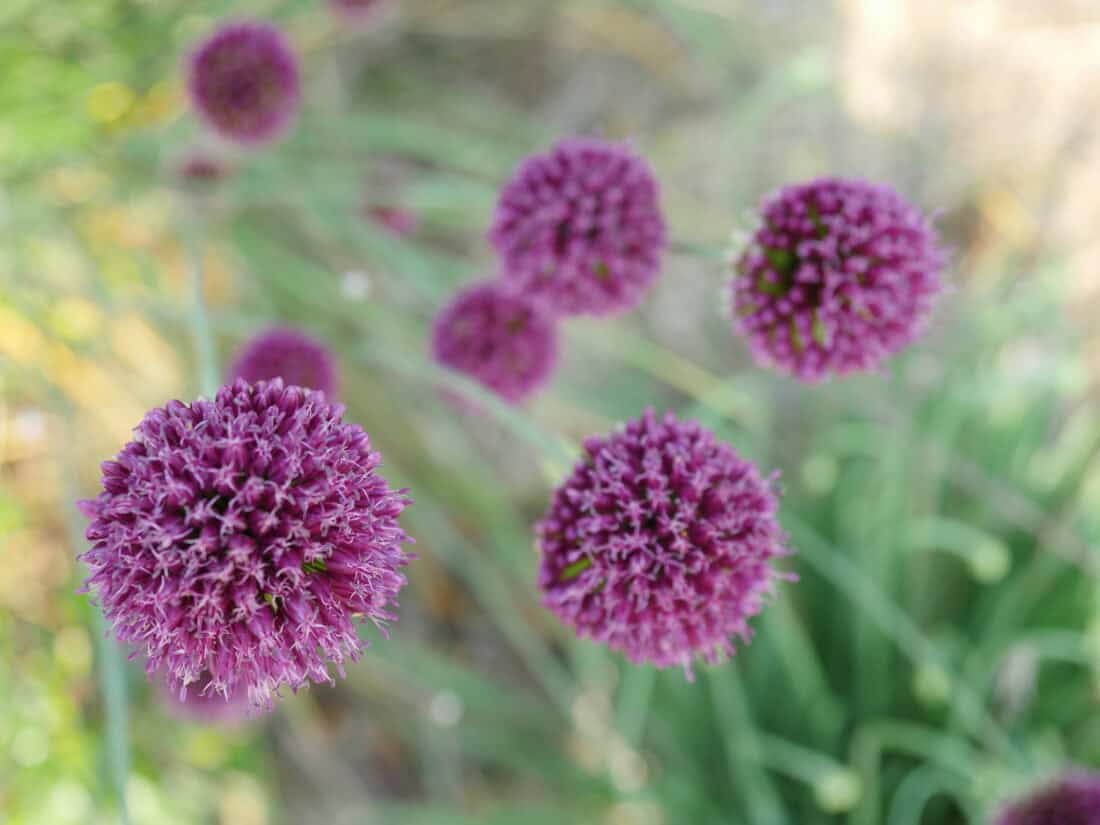
Allium Varieties by Bloom Time
The key to extending your allium enjoyment from a couple of weeks to all summer is to make sure you choose allium by their bloom time. You will need to pick at least one variety from each of the primary bloom windows: Spring (early May), mid-spring to early summer (mid-May-June), mid-summer (July), and late summer (August and later).
I don’t know of any allium that will emerge before May (at least in New England). You’ll have to be satisfied with daffodils, tulips, and other spring bulbs if you want flowers before the last frost.
How to Plant Alliums for Extended Blooms
If you want to have the longest amount of time with allium in bloom – pick at least one variety from each bloom window. Succession planting for allium is pretty straightforward – you simply need to layer in a collection of allium – rather than just one that will quickly come and go over a few short weeks.
Planting Tip: Keep the planting easy – once you have a selection from all the bloom season, mix them together and plant them in one hole. This will randomize the selection and make the installation easier (less holes, less fuss, less time – don’t make it harder than it needs to be).
The earliest blooming allium will start at the beginning of May – there aren’t many that will bloom this early, but it is worth looking for the few listed below. I haven’t grown any of these (yet), but I am trying out Allium ‘Miami’, which is also reported to be on the earlier side -I’ll let you know if it comes in before others.
- Allium ‘Early Emperor‘ – The best way to extend the bloom season for traditional purple blub style allium is to look for A. Early Emperor. They tend to bloom about two weeks earlier than most other varieties.
- Allium neapolitanum (Daffodil Garlic): Clusters of starry white flowers will not give you the flush of purple – but they are pretty flowers that are great bouquet fillers.
- Allium oreophilum: Another gap filler (filling the gap between earlier bulbs and the blooms that kick into high gear in June, these rosy pink loose alliums are ideal for rock gardens.
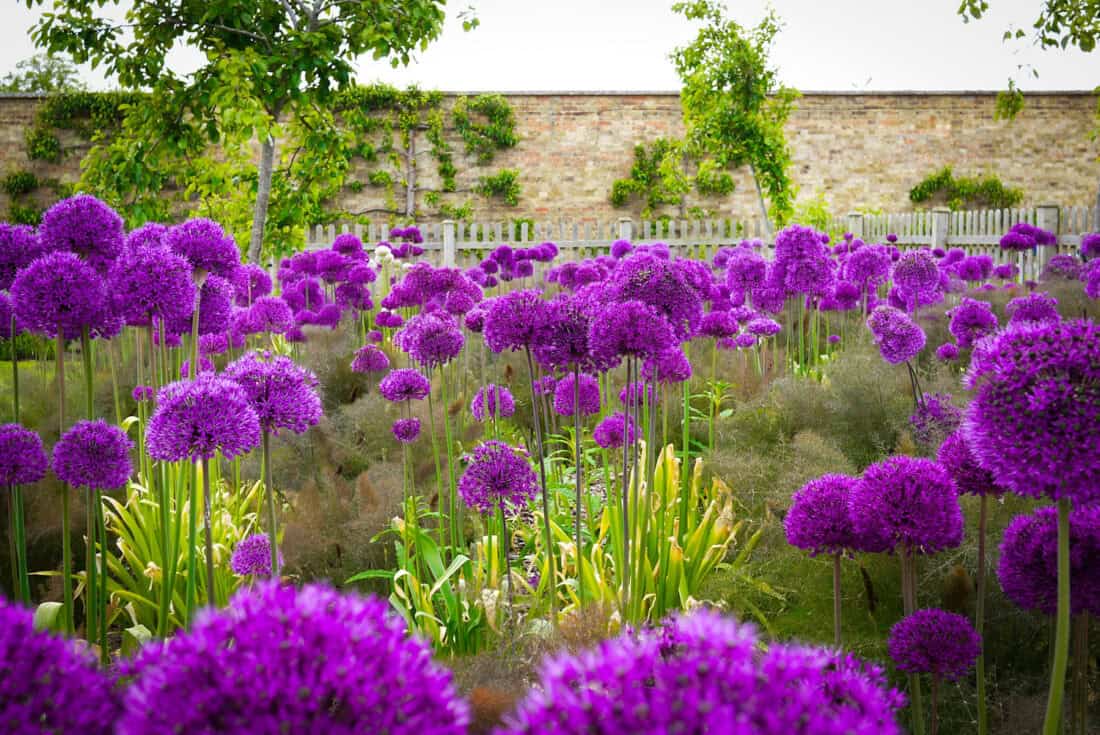
Mid-spring to Early Summer (May/June) Blooming Allium
Mid-spring blooming Alliums are the easiest season to plan for. You’ll have lots to choose from since this is when most Allium naturally blooms in the northern hemisphere.
- Allium aflatunense (or also known as Allium hollandicum) ‘Purple Sensation’ is my favorite. The large purple spheres make a bold statement. These are readily available from many suppliers.
- Allium atropurpureum: Deep purple or burgundy blooms add another color dimension. I think these darker and redder varieties are great for a more sophisticated look.
- Allium christophii (Star of Persia): These big balls with silver-violet starburst flowers dry beautifully. The lavender blooms combine nicely with A. Purple Sensation and A. atropurpreum are used for a tried-and-true three variety combo.
- Allium ‘Purple Rain’ – This is a great swap for purple sensation. I grow them both and I generally think of them as the same. (I know they are different; Purple rain is apparently a little looser and later blooming – but it isn’t something so significant that I pay attention to the differences when they are side by side in the garden).
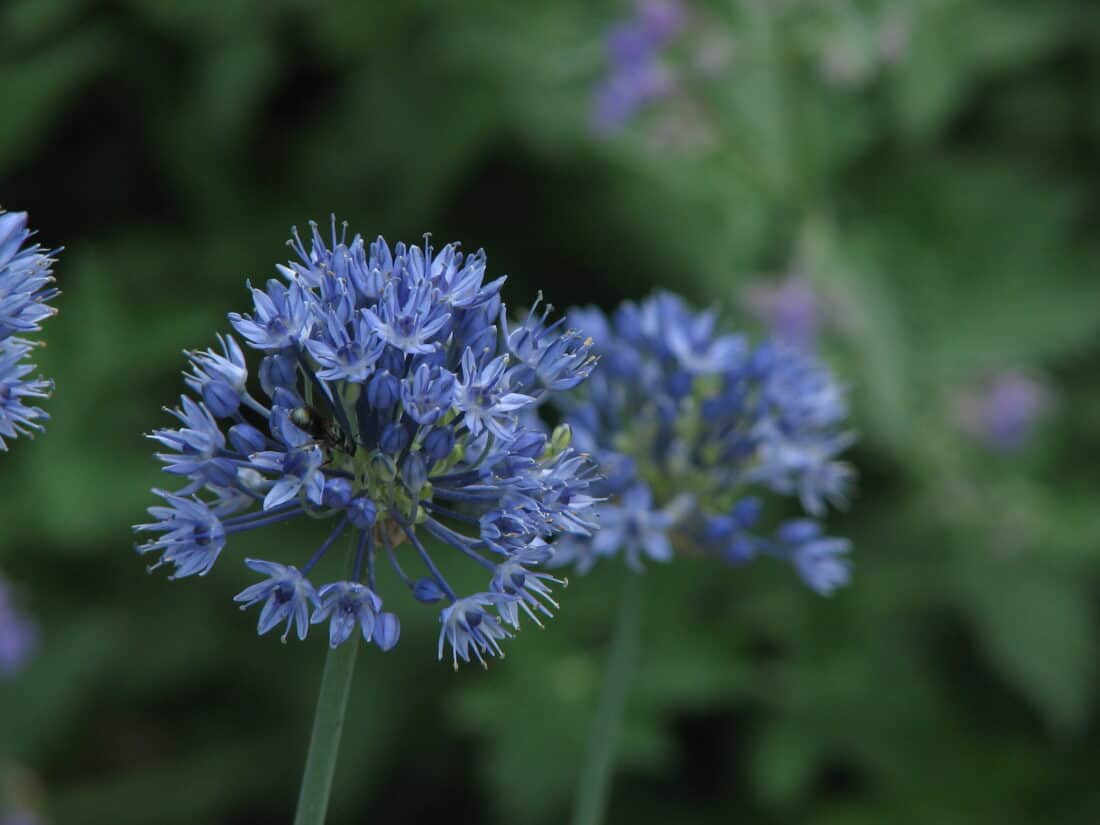
Mid-Summer Alliums
Mis summer-blooming alliums are a little less common, but there are a couple of really great options. My personal favorite (and what I have planted in my own garden) is the drumstick allium (allium sphaeroceplalon). It is beautiful in a naturalistic planting – its wirey stems stand among grasses, and the dark purple heads look great with basically everything.
Blue flowers can be hard to come by. Allium caeruleum is special, not just for its summer bloom time but also because its flower color is one of the few blue blooms for a sunny spot.
- Allium sphaerocephalon (Drumstick Allium): Slender stems with egg-shaped purple heads.
- Allium caeruleum: Striking blue blooms that contrast beautifully with warm tones.
- Allium ‘Mohican‘ – Red Mohican Allium is in my garden for an additional accent to the drumstick alliums. I’m slightly obsessed with their ‘hats’.
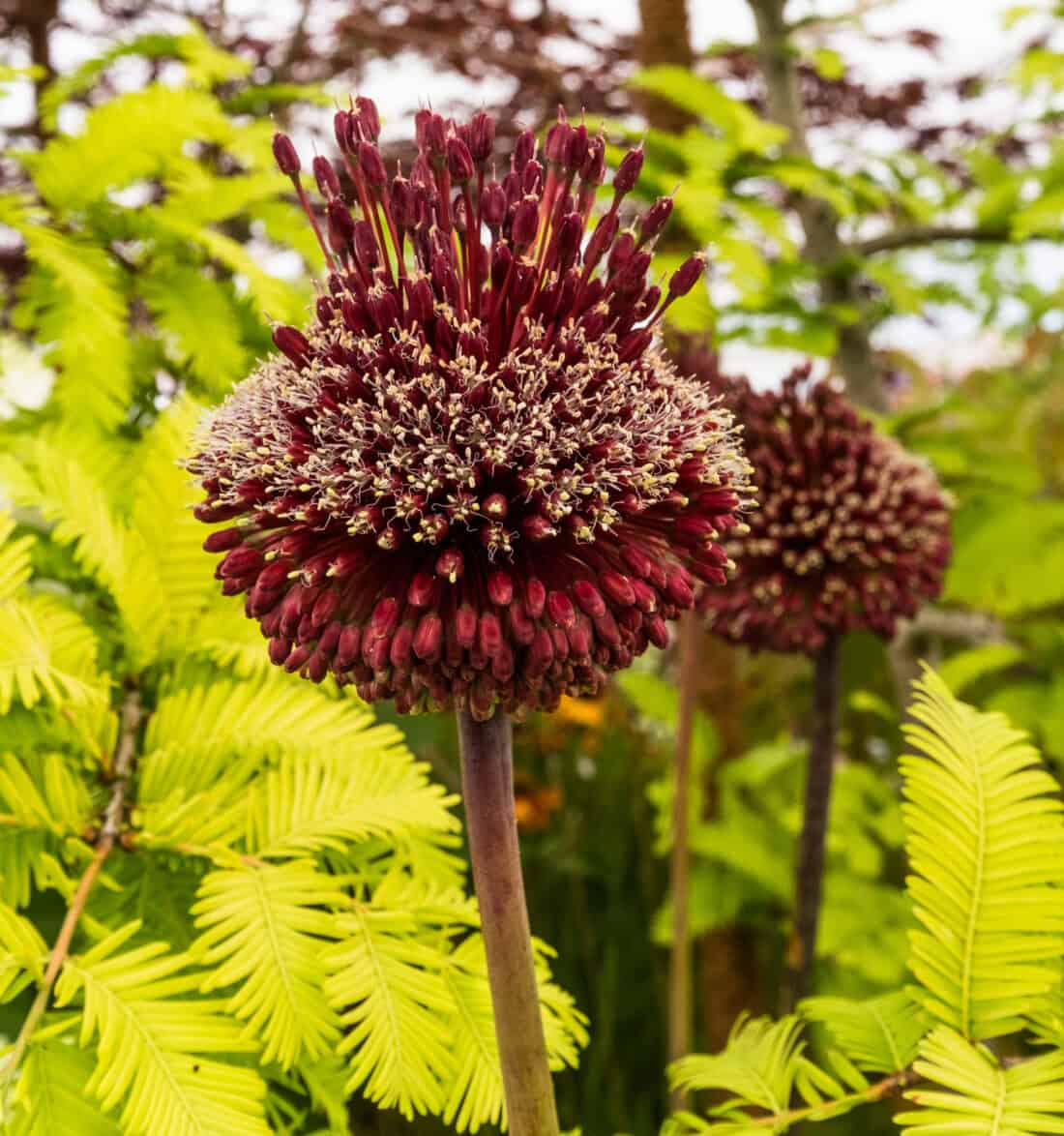
Allium flowers with Late Summer bloom time (August-September)
There are a handful of August and lat blooming allium. Allium millennium was the PPA perennial plant of the year in 2018 (which says a lot – its good all around plant). But if you want something that is more like the traditional fairy wand style of allium opt instead for Allium ‘Summer Dummer’.
- Allium tuberosum (Garlic Chives): White, lacy blooms that also provide edible foliage.
- Allium senescens (Curly Onion): Pink-purple flowers with ornamental, wavy leaves.
- Allium ‘Millenium’ – Millenium Allium is a compact, clump-forming perennial with glossy green, grass-like foliage and vibrant, rounded clusters of rosy-purple flowers that bloom profusely in mid-to-late summer, attracting pollinators and resisting deer and rabbits. Unlike other allium bulbs, it is a cloud of blooms rather than one bulb to one plant.
- Allium ‘Summer Drummer’ – is the latest blooming and tallest of all the allium bulbs.
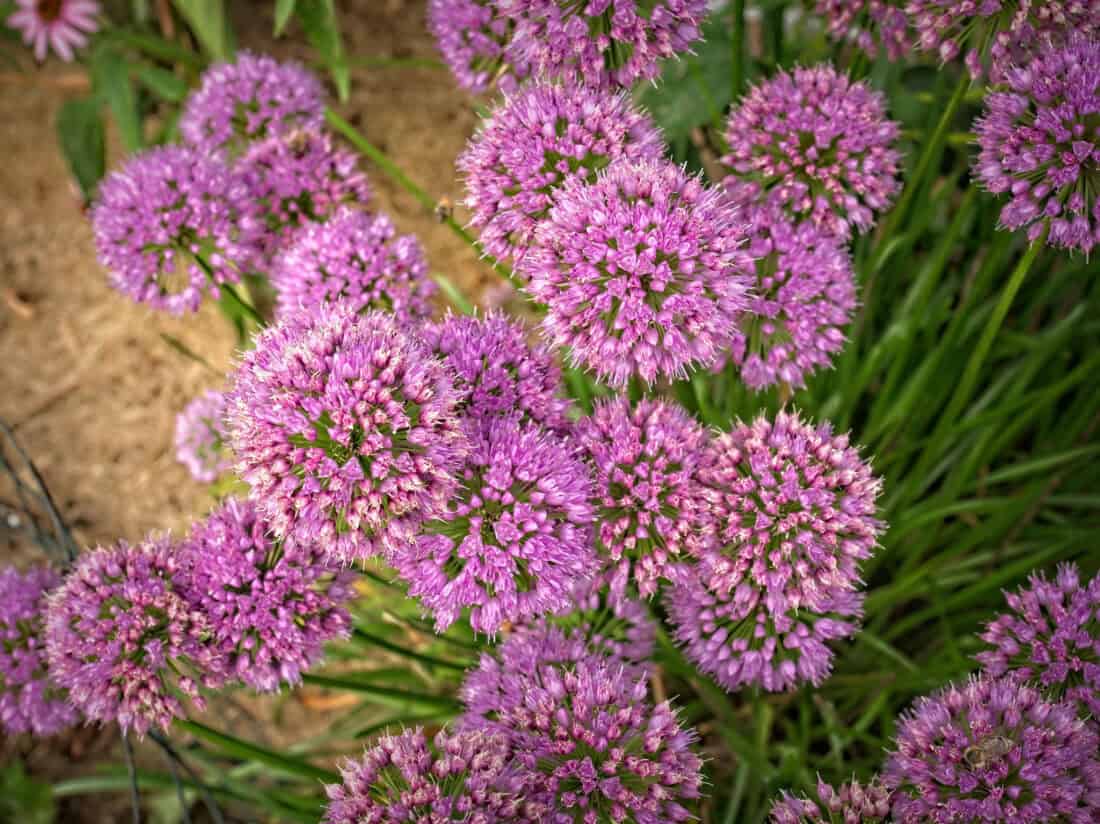
Notes on Caring for Alliums Throughout the Season
- Plant in the fall for the best blooms the following summer.
- Space bulbs 4-8 inches apart to give them room to naturalize.
- Well-drained soil is critical – avoid soggy spots.
- Full sun is ideal, but some varieties tolerate partial shade.
- Keep soil moist during the active growing phase; reduce watering after blooms fade.
- Don’t remove spent blooms to collect seeds.
- Leave foliage to die back naturally, as it feeds the bulb for next year.
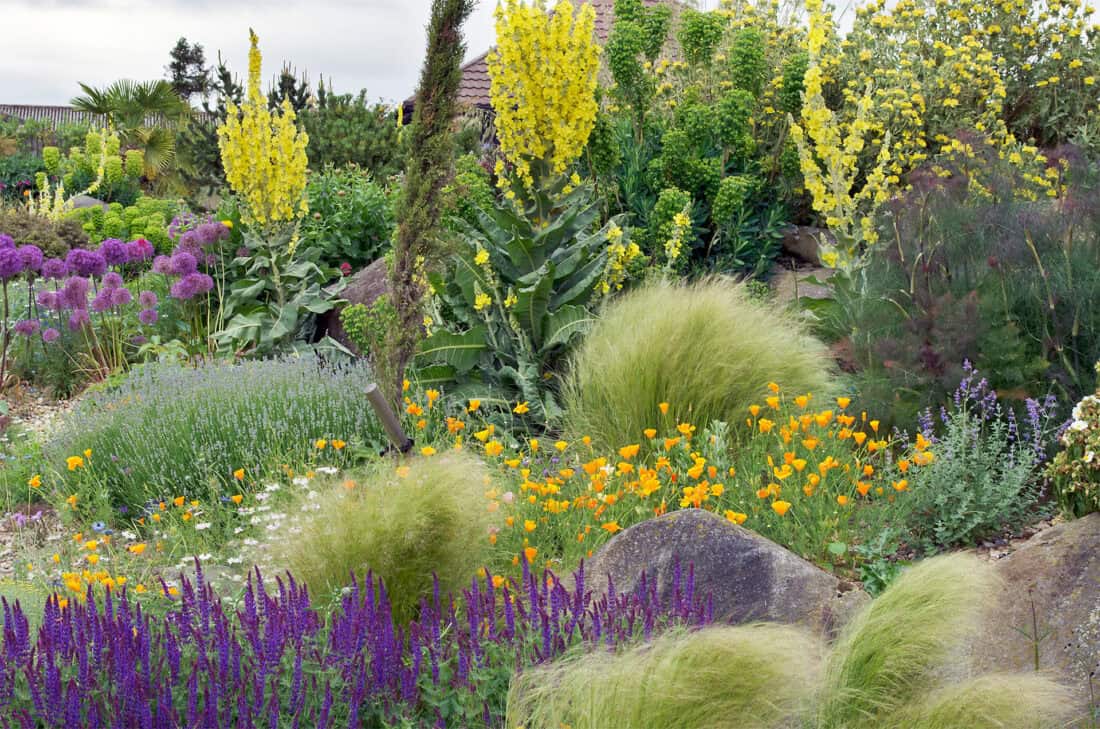
Design Ideas with Alliums
- Pair with perennials like nepeta, echinacea, and salvia to hide fading foliage. Seriously – the foliage gets really ugly. Make a plan to hide it.
- Plant the bulbs away from the edge of the bed so that you can more easily hide the foliage in other plants.
- Use tall alliums as vertical accents in borders or mix drumstick alliums in prairie-style gardens.
- Create a naturalistic meadow.
- Use in mass plantings for dramatic displays.
- Combine with grasses for a modern look.
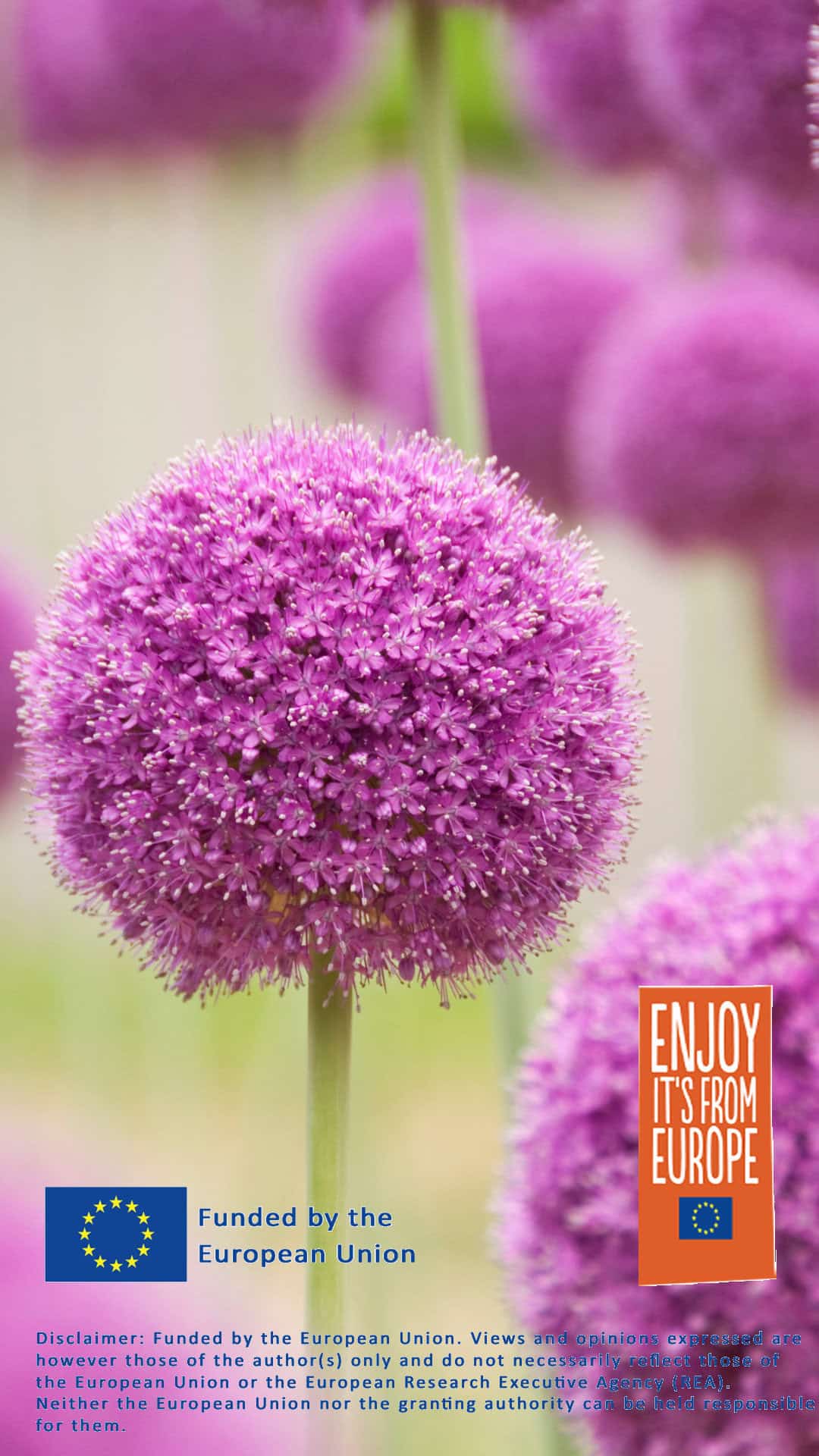
This post is sponsored by flowerbulbs.com
+comments+